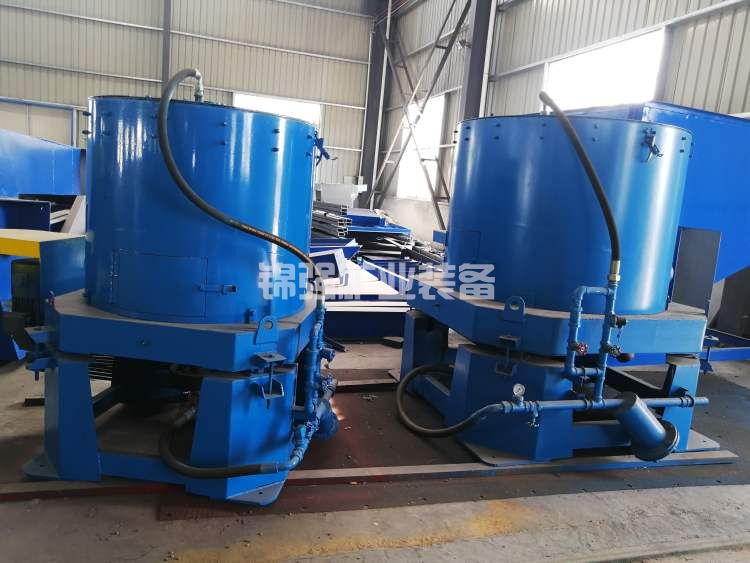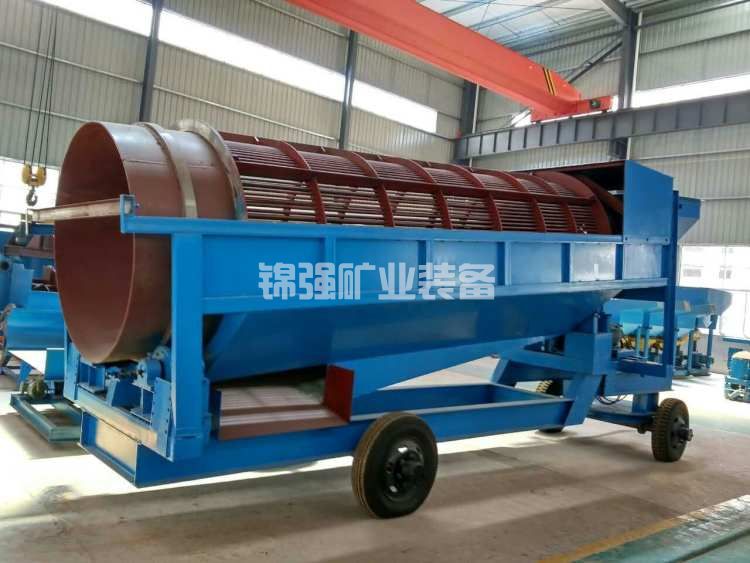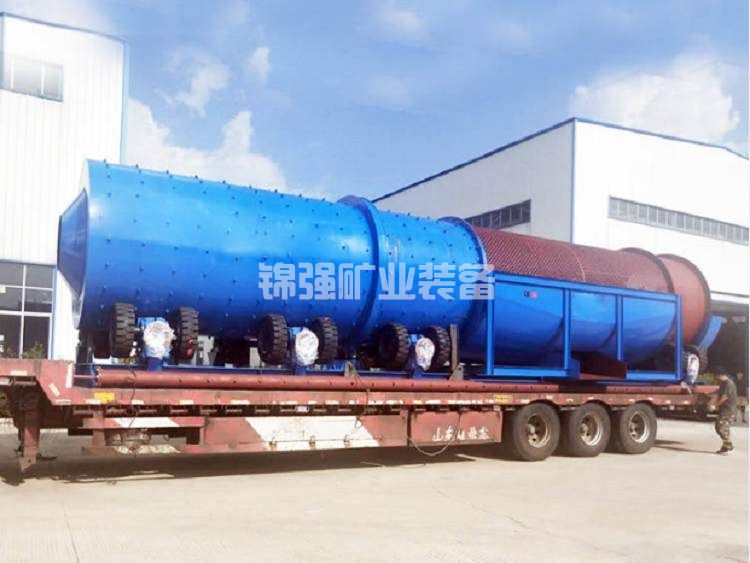 Service Phone:
+8619870423316
Service Phone:
+8619870423316
 Service Phone:+8619870423316
Service Phone:+8619870423316
current location: home > News and information
update date :2023-11-13 11:02:47Number of views: author:admin
Welcome to our article on the types of gold mining! If you've ever wondered how gold is extracted from the earth, you're in the right place. Gold mining has a rich history and has undergone significant advancements over the years. In this article, we will explore the different methods used to find and extract gold, both in the past and in modern times.
Gold has always been a highly valued precious metal, sought after by individuals, institutions, and governments alike. Its unique properties, such as malleability, conductivity, and ductility, make it invaluable for various industries, particularly in the manufacturing of electronics. Additionally, gold has proven to be a reliable investment, delivering steady returns over both the short and long term. It is often considered a "safe haven" during times of economic uncertainty.
The origins of gold mining can be traced back thousands of years, with evidence suggesting that it may have started as early as 4,200 to 4,700 BC. The Romans were known to employ methods like hushing and ground sluicing to extract gold from alluvial deposits. Gold mining was also prevalent in other parts of the world, including the Kolar gold fields in India and the gold rushes in California and the Klondike.
Today, gold mining has become a large-scale commercial operation, with mining companies utilizing advanced technology and machinery. There are four main types of gold mining methods: placer mining, hard rock mining, by-product mining, and processing of gold ore. Each method has its own unique approach to extracting gold from the earth.
In the following sections, we will delve deeper into each of these methods, exploring their techniques, equipment, and environmental impact. Whether you're a history enthusiast or simply curious about the process of gold mining, this article will provide you with valuable insights into the fascinating world of gold extraction. So, let's dive in and explore the different types of gold mining methods together!


In the pursuit of gold, humans have employed various methods throughout history. These ancient techniques provide us with a glimpse into the ingenuity and resourcefulness of our ancestors.
One of the earliest known methods of gold mining dates back to around 4,200 to 4,700 BC. Archaeological evidence suggests that gold mining was prevalent during the time of the Roman Empire. The Romans employed techniques such as hushing and ground sluicing to extract gold from mines containing loose alluvial deposits. These hydraulic mining methods were later adopted across Europe.
Roman gold mines have been unearthed in various regions that were part of the Roman Empire, including the Balkans, Armenia, Egypt, and Nubia. In fact, a gold mine has even been discovered in West Wales, UK, believed to have been operated by the Romans.
Gold mining was not limited to the Roman Empire. The Kolar gold fields in Karnataka, India, have been active since the second century A.D. During the 19th century, gold rushes occurred in different parts of the world, including the famous California Gold Rush of 1849 and the Klondike Gold Rush.
These historical methods of gold mining involved techniques like panning, cradling, sluicing, and dredging. Panning and cradling were manual techniques that involved swirling gravel and water in a pan or rocking a special gold-catching box to separate the gold from other materials.
Sluicing used water and riffles to trap gold, while dredging involved dragging buckets along the riverbed to collect gravel and sift it for gold.
These methods, although labor-intensive, were effective in extracting gold from rivers and alluvial deposits. They were the mainstay of gold prospecting during historical gold rushes.
As we delve into the history of gold mining, it is evident that our ancestors possessed the knowledge and skills to extract this precious metal. These historical methods laid the foundation for the modern techniques employed today.

In the modern era, gold mining has become a highly sophisticated process, utilizing advanced technology and machinery to extract this precious metal from the earth. These modern methods have revolutionized the industry, making it more efficient and environmentally friendly.
One of the most common modern methods of gold mining is open-pit mining. This method involves the excavation of large open pits or quarries to extract gold from the earth. Heavy machinery, such as excavators and bulldozers, is used to remove the overburden and expose the gold-bearing ore. The ore is then extracted using explosives and transported to a processing plant for further refinement.
Another modern method of gold mining is underground mining. This method is used when the gold deposits are located deep underground. Miners use tunnels and shafts to access the gold-bearing ore, and specialized equipment, such as drills and explosives, to extract the gold. Underground mining requires careful planning and safety measures to ensure the well-being of the miners and the efficient extraction of gold.
In addition to open-pit and underground mining, there are also innovative techniques being developed in the field of gold mining. For example, heap leaching is a method that involves the extraction of gold from low-grade ore by stacking it into a heap and then applying a leaching solution to dissolve the gold. This method is cost-effective and allows for the extraction of gold from ore that would otherwise be considered uneconomical.
Furthermore, advancements in technology have led to the development of more efficient and environmentally friendly processes for extracting gold. For instance, cyanide-free methods are being researched and implemented to reduce the environmental impact of gold mining.
Overall, modern methods of gold mining have transformed the industry, making it safer, more efficient, and more sustainable. These advancements in technology and techniques ensure the continued supply of gold while minimizing the impact on the environment. As the demand for gold continues to grow, it is crucial to embrace these modern methods to ensure a responsible and sustainable future for gold mining.

When it comes to finding gold, placer mining has been a tried and true method throughout history. This technique involves extracting gold nuggets, flakes, and dust from rivers and streams. Unlike other forms of mining, placer mining is accessible to both amateur gold hunters and commercial operations.
One of the most popular methods of placer mining is gold panning. This manual technique involves using a special pan to swirl gravel and water together from a river. As gold is much denser than rock, it quickly sinks to the bottom of the pan, while the water and dirt are swished out. Gold panning can be a thrilling endeavor, especially for those seeking a hands-on experience in their search for gold.
Another method used in placer mining is the use of cradles. These special gold catching boxes with mesh nets are placed in rivers and rocked back and forth, similar to a cradle. This motion helps separate the gold from the river gravel, allowing it to be collected.
Hydraulic mining is another technique used in placer mining. It involves spraying water at hillsides to wash rocks and dirt into nearby rivers, where gold may have been deposited. This method requires strong hoses and is commonly used in larger-scale operations.
Lastly, dredging is a popular method in placer mining. Miners use small floating machines equipped with sluice boxes and suction hoses to extract gold from the bottom of rivers. The buckets attached to the suction hose gather riverbed gravel, which is then sifted for gold.
Placer mining offers a thrilling and rewarding experience for gold hunters. It allows individuals to get up close and personal with the natural environment while searching for the precious metal. Whether it's the excitement of panning for gold or the efficiency of dredging, placer mining continues to be a popular and effective method for finding gold.

When it comes to extracting gold from solid rock formations, hard rock mining takes the spotlight. This method is typically employed on a large scale and involves the use of heavy machinery and equipment. Unlike placer mining, which relies on the separation of gold from loose sediment, hard rock mining targets solid rock formations that contain gold veins.
To begin the process, miners locate areas with significant amounts of gold veins. These rocks are often found deep underground, requiring the construction of tunnels or mine shafts for access. Miners use pick axes and explosives to remove the gold-bearing rocks, sometimes working miles underground.
Once the rocks with gold veins have been extracted, they are crushed into dust. This crushed material is then subjected to a chemical process to separate the gold from the surrounding rock and earth. Cyanide is commonly used in this process, although it can be expensive and environmentally impactful.
Hard rock mining is a more complex and expensive process compared to placer mining. However, it offers the potential for higher yields of gold. In fact, hard rock mining is responsible for the majority of the world's gold production.
With its focus on solid rock formations, hard rock mining requires expertise, advanced equipment, and careful planning. Miners must navigate the challenges of working underground and ensure the safety of both workers and the environment.
In conclusion, hard rock mining plays a crucial role in the extraction of gold from solid rock formations. Its rigorous processes and specialized equipment make it a key method for obtaining gold on a large scale. By targeting gold veins within rocks, hard rock mining contributes significantly to the global gold supply.

By-product mining is an interesting method used to extract gold from the earth. Unlike other types of gold mining, where gold is the primary focus, by-product mining involves the extraction of gold as a secondary find while mining for other minerals. This method is especially profitable when mining for copper, sand, gravel, or other products that have a higher demand.
In this type of mining, the main objective is not to mine gold, but rather to recover other valuable minerals. However, significant quantities of gold can be found as a by-product, making it a profitable venture. One example of this is the Grasberg mine in Papua, Indonesia, which was primarily developed for extracting copper. Surprisingly, this mine produces more gold than any other mine in the world, even though gold is not its primary product.
By-product mining is typically carried out using the same methods as hard rock mining. Miners use open pit or underground mining tunnels to extract the desired minerals, and during the process, they come across gold deposits. These gold veins are often found in rocks miles underground, requiring the construction of tunnels or mine shafts for access.
Once the rocks with gold veins are removed, they are crushed into dust. Chemicals, such as cyanide, are then used to extract the gold from the crushed rock. While this method can be expensive due to the low yield of gold achieved, it remains a profitable option for mining companies due to the abundance of other valuable minerals.
By-product mining showcases the interconnectedness of different minerals and the potential for unexpected discoveries. It highlights the importance of comprehensive mining operations that consider the extraction of multiple resources, including gold.


Processing of gold ore is a crucial step in the gold mining process. Once the rocks with gold veins have been removed from the earth through tunnels in hard rock mining, they are crushed into dust. This crushed rock or earth contains fine traces of gold that need to be extracted using a chemical process.
The most commonly used chemical for this process is cyanide. Cyanide is added to the crushed rock or earth, and it reacts with the gold particles to form a soluble compound. This compound is then separated from the rest of the material using various techniques.
The extraction of gold from the ore is a complex process that requires expertise and specialized equipment. The use of chemicals like cyanide is expensive, and the yield of gold achieved through this method is often low. As a result, the processing of gold ore is becoming less popular due to its environmental impact and high costs.
However, it is important to note that processing of gold ore still plays a significant role in the gold mining industry. In some cases, the gold content in the ore is high enough to make the extraction process economically viable. Moreover, advancements in technology and research continue to improve the efficiency and sustainability of gold ore processing.
Overall, the processing of gold ore is a critical step in the gold mining process. It involves the use of chemicals and specialized equipment to extract gold from the crushed rock or earth. While this method has its challenges, it remains an essential part of the gold mining industry.


In conclusion, the world of gold mining is a fascinating one, filled with rich history and significant advancements. From the ancient techniques employed by our ancestors to the modern methods utilizing advanced technology, gold mining has evolved into a highly sophisticated process.
Throughout history, humans have showcased their ingenuity and resourcefulness in extracting gold from the earth. The Romans employed techniques like hushing and ground sluicing, while gold rushes in different parts of the world saw the use of methods like panning, cradling, sluicing, and dredging. These historical methods laid the foundation for the modern techniques we use today.
In the modern era, gold mining has become more efficient and environmentally friendly. Open-pit mining and underground mining are the main methods used, with advancements in technology allowing for safer and more sustainable practices. Innovative techniques like heap leaching and cyanide-free methods are also being explored to reduce the environmental impact of gold mining.
Placer mining continues to be a popular method for finding gold, offering a thrilling and rewarding experience for gold hunters. On the other hand, hard rock mining targets solid rock formations and requires expertise, advanced equipment, and careful planning.
By-product mining has emerged as a profitable venture, where gold is extracted as a secondary find while mining for other minerals. This showcases the interconnectedness of different minerals and the potential for unexpected discoveries.
The processing of gold ore remains a critical step in the gold mining industry, although it is becoming less popular due to its environmental impact and high costs. However, advancements in technology and research continue to improve the efficiency and sustainability of gold ore processing.
Overall, the different types of gold mining methods have revolutionized the industry, making it safer, more efficient, and more sustainable. As the demand for gold continues to grow, it is crucial to embrace these modern methods to ensure a responsible and sustainable future for gold mining. So, whether you're a history enthusiast or a curious individual, the world of gold mining offers a wealth of insights and opportunities to explore.


 what type of mining was used to find gol
what type of mining was used to find gol tin mining equipment
tin mining equipment Design of Spiral Chute Beneficiation
Design of Spiral Chute Beneficiation Jiangxi fiberglass spiral chute quotatio
Jiangxi fiberglass spiral chute quotatio Rough selection of sandy kaolin spiral c
Rough selection of sandy kaolin spiral c Formula for processing capacity of spira
Formula for processing capacity of spira Coal slime gold mine spiral chute
Coal slime gold mine spiral chute 38 degree complete spiral chute
38 degree complete spiral chute Installation process of spiral chute
Installation process of spiral chute Spiral chute energy-saving installation
Spiral chute energy-saving installation Particle size of iron ore spiral chute
Particle size of iron ore spiral chute Manufacturing method of anti crushing sp
Manufacturing method of anti crushing sp